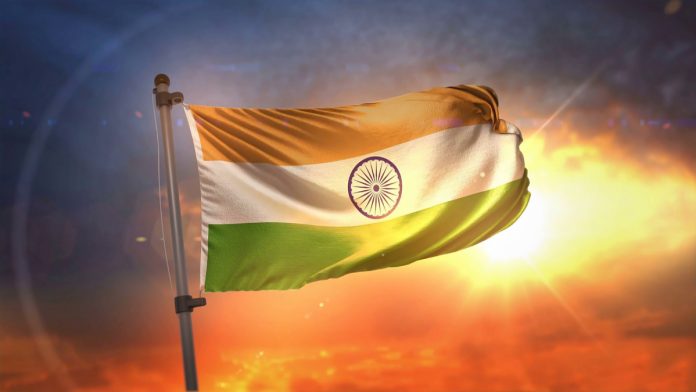Mirza Kashif Baig
In the intricate tapestry of South Asian geopolitics, the notion of the “Triangle of Death” has emerged as a pivotal strategic concern, particularly from the perspective of Pakistan and its allies. Encompassing the ports of Chittagong in Bangladesh, Hambantota in Sri Lanka, and Gwadar in Pakistan, this triangle represents not just geographical points on a map but potent symbols of a shifting regional power balance. Viewed through the lens of Pakistan, these ports are far more than mere logistical hubs; they are beacons of strategic depth and cooperation in the face of burgeoning Indian naval aspirations.
The significance of these ports transcends their commercial value, embedding themselves into the strategic calculations of regional actors. Their potential role in wartime scenarios as chokepoints and checkpoints positions them as critical assets in ensuring the security and economic lifelines of the region. Against the backdrop of India’s increasing military and economic might, the “Triangle of Death” emerges as a counterbalance, a subtle yet potent reminder of the power of strategic alliances and geographic positioning. From Pakistan’s viewpoint, the collaboration and mutual interests shared with China, Bangladesh, and Sri Lanka through these ports underscore a collective endeavor to maintain regional stability and deter unilateral hegemony.
Strategic importance of the triangle
From Pakistan’s vantage point, the strategic importance of the “Triangle of Death” comprising Chittagong, Hambantota, and Gwadar ports cannot be overstated. These ports are not just maritime gateways but pivotal cogs in the machinery of regional security and geopolitical strategy. They serve as both symbolic and practical counterweights to India’s expansive maritime ambitions, offering a network of support and strategic depth to Pakistan and its allies. The port of Chittagong is a linchpin in the Bay of Bengal, acting as a crucial maritime and trade hub for Bangladesh. Its significance from a strategic standpoint lies in its ability to serve as a potential launchpad for naval operations, providing a tactical advantage in the northeastern flank of the Indian Ocean. For Pakistan, Chittagong’s role is seen through the prism of cooperation and mutual strategic interests with Bangladesh, especially in countering India’s naval presence in the region. The Hambantota port, with its strategic location near the southern tip of Sri Lanka, controls one of the busiest maritime routes in the world. The port’s development, heavily influenced by Chinese investment, has raised eyebrows in New Delhi, given its potential use as a military base in a conflict scenario. From Islamabad’s perspective, Hambantota is a critical asset in the Indian Ocean’s power dynamics, offering a strategic vantage point that could serve to balance India’s maritime dominance.
Gwadar port stands as a testament to Pakistan-China cooperation, strategically located at the mouth of the Persian Gulf and overlooking key shipping routes. Its development is a cornerstone of the China-Pakistan Economic Corridor (CPEC), symbolizing the deep-rooted strategic partnership between Pakistan and China. Gwadar’s significance extends beyond economic value, embodying Pakistan’s ambition to enhance its strategic depth and maritime capabilities. In the context of the “Triangle of Death,” Gwadar serves as the western vertex, securing Pakistan’s interests and serving as a critical node in regional maritime security.
The collective strategic value of the “Triangle of Death” ports lies in their ability to serve as chokepoints and checkpoints in times of conflict, providing a strategic advantage against India. For Pakistan, these ports symbolize the strength of regional cooperation and the importance of a multipolar world order. They are viewed as essential components in a broader strategy to maintain regional balance and deter any attempts at maritime dominance by India.
The deployment of naval assets and the development of these ports have broader implications for the Indian Ocean’s security architecture. They represent a shift towards a more balanced power distribution, emphasizing the importance of strategic alliances and cooperation. For Pakistan, the “Triangle of Death” is not just a geographical concept but a strategic doctrine that underscores the necessity of mutual support and collaboration in the face of common challenges.
In this light, the ports of Chittagong, Hambantota, and Gwadar are more than mere waypoints on the maritime map; they are bastions of a strategic vision that seeks to preserve regional stability and foster an environment where no single power can assert unchecked dominance.
India’s geopolitical stance and challenges
India’s aspiration to be recognized as a regional and emerging global superpower is well documented. However, this ambition is not without its challenges, particularly when viewed through the lens of Pakistan and the strategic dynamics at play within the “Triangle of Death.” India’s balancing act between major global powers, its military modernization efforts, and its attempts to project power in the Indian Ocean region reveal a complex web of strategic ambitions and inherent limitations.
India’s geopolitical strategy has often involved walking a tightrope between Russia and the United States. While historical ties have made Russia a long-standing partner, particularly in defense, India’s recent overtures towards the United States signify a diversification of its strategic partnerships. From Pakistan’s perspective, this maneuvering reflects India’s attempt to maximize its geopolitical leverage. However, it also highlights India’s vulnerability to shifting global alliances and the challenges of navigating a world where its traditional partner, Russia, and its newer ally, the United States, have conflicting interests.
India’s military modernization, heavily reliant on Russian equipment and technology, presents another layer of complexity. While the transition towards more sophisticated American military technology could bolster India’s strategic capabilities in the long term, it is not without its challenges. The integration of advanced American technology into India’s predominantly Russian-equipped military poses significant logistical and operational hurdles. For Pakistan, these challenges underscore the limitations within India’s strategic aspirations, particularly in achieving a swift and seamless military transformation.
India’s position in the regional geopolitical landscape is further complicated by its aspirations to dominate the Indian Ocean. The development and militarization of strategic ports, viewed with suspicion by neighboring countries, have raised concerns about India’s intentions. From Islamabad’s standpoint, these actions affirm the necessity of the “Triangle of Death” as a strategic countermeasure to ensure a balance of power in the region. Pakistan views India’s ambitions with caution, emphasizing the need for strategic alliances and partnerships that can offer a counterbalance to India’s growing influence. The pursuit of regional dominance has led India into complex relationships with its neighbors. While it seeks to assert its influence, it faces challenges in managing these relationships, often resulting in tensions and conflicts. Pakistan perceives these challenges as indicative of the underlying issues in India’s regional strategy a strategy that, while ambitious, often overlooks the importance of constructive engagement and mutual respect.
In conclusion, India’s geopolitical stance and the challenges it faces are multifaceted. Its ambitions to be recognized as a major power are tempered by the realities of global and regional dynamics, where strategic ambitions must be matched with diplomatic finesse and operational capabilities. For Pakistan, these challenges represent opportunities to emphasize the importance of strategic depth, regional cooperation, and the need for a balanced power equation in South Asia.
The China-Pakistan axis vs. India-US dynamics
The evolving geopolitical landscape of South Asia and the broader Indian Ocean region is markedly influenced by the strategic axis formed between China and Pakistan, juxtaposed against the nuanced and often complex dynamics of India-US relations. From Pakistan’s perspective, the steadfast partnership with China stands as a bulwark against perceived Indian hegemony, while the oscillating nature of India-US ties presents both challenges and opportunities in the grand chessboard of international relations.
The China-Pakistan Economic Corridor (CPEC), part of China’s ambitious Belt and Road Initiative (BRI), symbolizes the depth and strength of the China-Pakistan axis. This partnership extends beyond mere economic cooperation, embodying a comprehensive strategic alliance aimed at fostering regional stability and security. Gwadar port, a crown jewel of CPEC, exemplifies this collaboration, serving not only as a commercial hub but also as a potential strategic naval outpost. This alliance is viewed by Pakistan as a countermeasure to India’s maritime strategies, ensuring that Pakistan remains a pivotal player in regional geopolitics.
The relationship between India and the United States has been characterized by strategic convergences, particularly concerning counterbalancing China’s rise. However, this partnership is not without its limitations. The United States’ recognition of India’s strategic autonomy and its cautious approach towards Pakistan’s concerns highlight the nuanced balancing act inherent in US foreign policy. Moreover, the legacy of US sanctions against Pakistan, particularly in the context of arms and ammunition, alongside the use of international financial mechanisms and proxy dynamics, has not gone unnoticed. Pakistan interprets these actions as indicative of the complex web of interests that the United States navigates in the region, often resulting in a cautious Pakistani stance towards American overtures.
The strategic alignments in the region reflect a classic realpolitik scenario, where national interests and strategic objectives dictate the nature of international partnerships. The China-Pakistan axis is viewed by Islamabad as a cornerstone of its foreign policy, offering a strategic counterbalance to India’s ambitions. Conversely, India’s engagement with the United States, while beneficial in certain respects, is fraught with the challenge of aligning the strategic interests of both nations, particularly in the face of historical complexities and regional sensitivities.
The China-Pakistan partnership, reinforced by projects like CPEC and the strategic use of Gwadar port, is seen as essential for maintaining regional stability and security. It represents a direct response to India’s maritime and strategic postures, emphasizing the importance of strategic depth and cooperative security arrangements. Conversely, the India-US dynamic, while significant, is subject to the vagaries of international politics and strategic recalibrations, reflecting the inherent uncertainties in bilateral partnerships.
In this context, the strategic landscape of S outh Asia is characterized by a delicate balance of power, where alliances and partnerships are continually evolving. Pakistan views its relationship with China as a stabilizing factor, ensuring that its strategic interests are safeguarded amidst the shifting sands of regional geopolitics. This perspective underscores the significance of the China-Pakistan axis in counterbalancing India’s strategic moves, highlighting the intricate dance of diplomacy, security, and regional cooperation.
India’s strategic betrayals and aspirations
India’s rise on the global stage is marked by a series of strategic maneuvers and aspirations that, from Pakistan’s viewpoint, often border on betrayals, particularly in the context of its engagements with both regional and global powers. These actions not only raise questions about India’s long-term intentions but also about its reliability as a partner in the complex tapestry of international relations. India’s diplomatic dance between Russia and the United States exemplifies its attempts to emerge as a global power, seeking to leverage the benefits of both relationships while committing fully to neither. This balancing act is perceived by Pakistan as a strategic betrayal, especially given India’s historical ties with Russia and its recent overtures towards the United States. The perception is that India’s actions are driven by a self-serving agenda, aiming to position itself as a counterweight to China, often at the expense of regional stability and the interests of its neighbors.
India’s pursuit of military modernization, with a significant tilt towards American defense technology, signals a strategic shift that raises concerns about the regional balance of power. Pakistan views this as another facet of India’s strategic betrayal, as it undermines the existing security paradigms and introduces new uncertainties into the regional equation. The transition from Russian to American military platforms not only reflects India’s ambitions but also its willingness to recalibrate its strategic alliances, raising questions about its long-term intentions and commitment to regional peace.
The formation of BRICS (Brazil, Russia, India, China, and South Africa) was seen as an opportunity for emerging economies to assert themselves on the global stage. However, India’s role within BRICS has been perceived by Pakistan as an attempt to carve out a position of leadership that challenges both regional adversaries and traditional powers. India’s aspirations within BRICS, particularly its efforts to position itself alongside Russia and China, are viewed as a strategic move to gain leverage against the United States and its allies, further complicating the global geopolitical landscape.
The geopolitical theorizations in Zbigniew Brzezinski’s “The Grand Chessboard” highlight the strategic importance of Eurasia and the role of pivotal states in determining global supremacy. India’s positioning and aspirations resonate with these theories, as it seeks to establish itself as a key player among the main adversaries of the United States, alongside Iran, China, and Russia. From Pakistan’s perspective, this ambition reflects India’s broader strategy of challenging American dominance, aligning itself with powers that seek to reshape the global order.
India’s strategic maneuvers, marked by a blend of aspirations and perceived betrayals, signal a complex navigation of the geopolitical landscape. From Pakistan’s standpoint, these actions underscore the need for vigilance and strategic alignment, particularly with allies like China, to counterbalance India’s ambitions and ensure regional stability. The evolving dynamics of South Asia’s geopolitics, characterized by shifting alliances and strategic recalibrations, demand a nuanced understanding of national aspirations and the delicate balance of power that defines the region.
Reflecting on regional stability and future prospects
The strategic chessboard of South Asia, with India’s ambitions and maneuvers at its core, presents a complex tableau of alliances, rivalries, and geopolitical aspirations. Through the lens of Pakistan and the strategic narrative surrounding the “Triangle of Death,” the intricate dance of power politics comes into sharp relief, highlighting the delicate balance that sustains regional stability. The interplay between India’s ambitions, the China-Pakistan axis, and the shifting dynamics of global alliances underscores a region at a crossroads, where the future hinges on strategic foresight, diplomatic acumen, and a commitment to collective security.
The “Triangle of Death” symbolizes more than a geographical or military strategy; it represents the evolving nature of geopolitical contestation in the Indian Ocean region and beyond. For Pakistan, it underscores the importance of strategic partnerships and alliances that serve as a counterbalance to India’s rising aspirations and its complex web of relationships with global powers. This strategic posture is not just about deterrence or rivalry but about ensuring a multipolar region where no single actor can dominate unilaterally, thus preserving the delicate equilibrium that underpins regional peace and stability.
Looking forward, the trajectory of South Asia’s geopolitical landscape will likely be shaped by how effectively regional players navigate the challenges and opportunities presented by this complex environment. The imperatives of national security, economic development, and regional cooperation will demand a nuanced understanding of the interdependencies that define this landscape. For Pakistan, forging a path that balances strategic interests with the pursuit of regional stability will be paramount, as will be the ability to adapt to the changing contours of global politics. As we reflect on the “Triangle of Death” and the broader strategic dynamics at play, it becomes clear that the future of South Asia is intricately linked to the wisdom, restraint, and vision of its leaders. The pursuit of a stable, secure, and prosperous region is a shared responsibility, one that transcends rivalries and embraces the potential for cooperation and collective growth.
The author is the Editor of Monthly Interaction.










